BAJAJ BROKING
Laxmi Dental IPO is Open!
Open a Free Demat Account
Trade Now, Pay Later with up to 4x
Track Market Movers Instantly
5 Things You Did Not Know About Union Budget
The Union Budget is set to be presented on the 23rd of July, 2024 by Finance Minister Nirmala Sitaraman. Despite her sixth Union Budget in a row, expectations are running high in almost every sector. Brimming with high hopes, anticipating it to be a ‘people’s budget’ eyes are set on announcements on technological innovations and increased fund allocation.
Contrary to popular belief, the Union Budget is more than just about numbers and policies. If you look closely, it's a treasure trove of quirky traditions, historical gems, and fascinating trivia. Whether you're a budget newbie or a fiscal fanatic, get ready to unravel some delightful secrets! Here are five intriguing facts that will tickle your curiosity and give you a fresh perspective on the financial spectacle that shapes our nation.
Exploring the Union Budget: Unearthing Fascinating Facts
The Indian Union budget has come a long way from 1947 when it was first introduced by RK Shanmukham Chetty. While the first interim budget also talked about bringing productive changes to address the nation’s economic challenges, there were differences in its method of preparation and presentation that will leave you amazed. Let’s begin.
Evolution of the Union Budget: From Ancient Ledgers to Bahi Khata to Tablet
Back in the day, India adapted to multiple British practices that included the union budget being carried in a briefcase. The British used “Gladstone Box” for budget presentations that seamlessly transferred to free India’s budget announcement.
However, in 2019, Finance Minister Nirmala Sitaraman swapped the traditional briefcase with a Redbook or “Bahi Khata” as a symbolic departure from colonial rule. Bahi Khata is a symbolic book for the local Indian economy that is used to maintain accounts and receipts. This symbolic gesture of the finance minister received appreciation and rightly so. However, the pandemic flipped the script once again, and the budget presentations went paperless and are now used using tablets.
The Black, Carrot and Stick Budge: Sweet Incentives and Firm Sanctions
The 1973-74 union budget of India is dubbed the "Black Budget," as the country was going through a grave financial crisis and even a well-planned budget presented by the then Finance Minister Mr Yashwantrao B Chavan could not help. The fiscal deficit during the year was 550 crores. While the Indian budget redeemed itself in the next few years, another interesting budget was the 1986 budget called the Carrot & Stick budget. The 1986 budget was presented by Mr. VP Singh who took steps to dismantle license Raj in India. The carrot & stick reference is used to represent the dual nature of the budget while providing relief under MODVAT and launching a mission-like approach towards smugglers and tax evaders.
The First Interim Budget: A Historic Financial Beginning
The first interim budget of India was announced on 26th November 1947 by RK Shanmukham Chetty. The budget was a whopping 10,000-word epic spread across 39 pages. It not only talked about the budgetary planning of the then government but was a celebration of independence from British rule as it was the first budget of a free India. His memorable words, “For the first time in two centuries, we have a Government of our own answerable to the people for its actions,” resonated deeply across the nation. The first budget had a budget revenue of ₹171.15 crore and an estimated expenditure of ₹197.29 crore.Leaked Union Budget, 1950: Starting a More Secure and Confidential Budget Process
The budget process has now become highly secure and confidential. However, in 1950 the union budget was leaked while being printed at the Rashtpati Bhawan press (President’s House). This breach sparked a storm of questions about the integrity of the finance ministry, with Finance Minister John Mathai at the centre of the controversy. The long line of questioning and accusations of serving the rich and powerful resulted in Mr John Mathai resigning from his post.
The 1950 incident marked a turning point, kickstarting a more secure and confidential budget process. The next year, union budget printing was done on Minto Road and finally in 1980, it shifted to the North Block, Delhi.Halwa Ceremony and Lock-in Period: From Stirring Sweets to Sealing Secrets
A very interesting and integral part of budget preparation is the ‘halwa ceremony’. Picture this: the Finance Minister herself stirring the pot, a sweet nod to the hard work of the finance ministry officials. This delicious event kicks off the crucial phase of printing the budget documents.
Interestingly, the Halwa ceremony has become a beloved tradition of budget preparations and presentations in India. The ceremony marks the beginning of the lock-in period of the union budget and is celebrated within the campus of the finance ministry, basement to be specific. Once the sweets are served, no official involved in the budget process can leave the premises until the budget is presented in Parliament.
The ceremony is a symbolic gesture to initiate the isolation of the finance ministry and staff involved in the budget preparation to prevent any chances of leakage. The finance ministry is locked like a fortress for 9-10 days and the involved persons are cut off from the outside world. This quirky tradition has been strictly followed since a budget leak in 1950 led to the dramatic resignation of then Finance Minister John Mathai.
Wrapping Up
The Indian Union budget has come a long way both in its preparation and presentation methods. From not making big budget announcements to hours of discussions in the Parliament, the union budget has marked several changes.
Finance Minister Nirmala Sitharaman recently set the stage with an interim budget for 2024, paving the way for upcoming announcements on July 23, 2024. The government is poised to allocate ₹47,65,768 crore, approximately 6% higher than the previous year, demonstrating its commitment to economic growth and development. As anticipation builds, all eyes are on the forthcoming budget for its potential impact on various sectors and the overall economy.
Disclaimer: Investments in the securities market are subject to market risk, read all related documents carefully before investing. This content is for educational purposes only. Securities quoted are exemplary and not recommendatory.
For All Disclaimers Click Here: https://bit.ly/3Tcsfuc
Share this article:
- Related Articles
- Top Articles

Gold Rate Today | 15 January 2025 | Gold Price in India
15 Jan, 2025 | 40 Min. read

Delhi Court Discharges JSW Steel in Corruption Case; HC Clears Monnet Takeover
15 Jan, 2025 | 2 Min. read
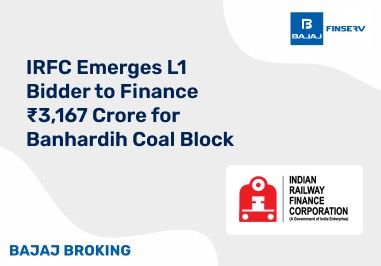
IRFC Emerges L1 Bidder to Finance ₹3,167 Crore for Banhardih Coal Block
15 Jan, 2025 | 2 Min. read
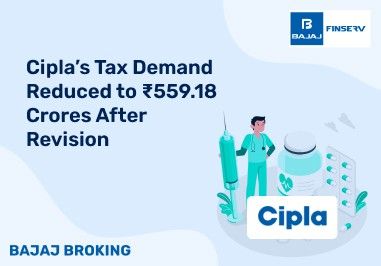
Cipla’s Tax Demand Reduced to ₹559.18 Crores After Revision
15 Jan, 2025 | 2 Min. read
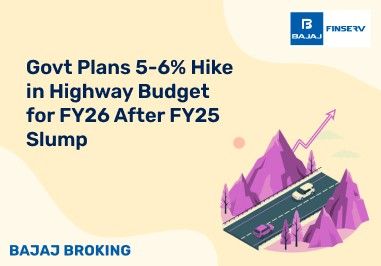
Govt Plans 5-6% Hike in Highway Budget for FY26 After FY25 Slump
15 Jan, 2025 | 2 Min. read

Rikhav Securities IPO- Key Objective & Deep Analysis
15 Jan, 2025 | 5 Min. read

HCL Tech expands partnership with Microsoft to transform contact centres
14 Jan, 2025 | 2 Min. read
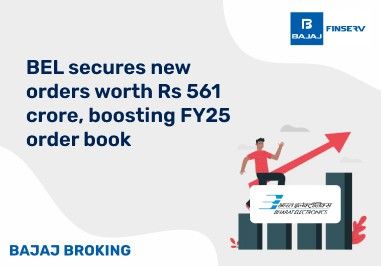
BEL secures new orders worth Rs 561 crore, boosting FY25 order book
14 Jan, 2025 | 2 Min. read

ITI Ltd secures Rs 64 crore contracts for Wi-Fi and CCTV systems
14 Jan, 2025 | 2 Min. read

JSW Energy secures LoI for 3.6 GW KSK Mahanadi power plant
14 Jan, 2025 | 2 Min. read

Biocon Biologics’ Johor Bahru Facility Receives FDA VAI Classification
13 Jan, 2025 | 2 Min. read

Interarch Secures ₹221 Crore Projects in Semiconductors & Energy Storage
13 Jan, 2025 | 2 Min. read
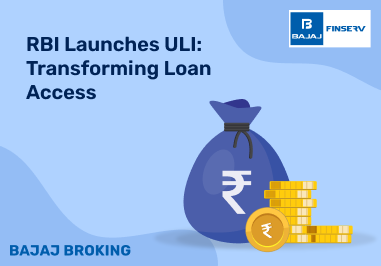
RBI Launches ULI: Transforming Loan Access
August 27, 2024 | 4 Min. read

Textile Sector in India
September 20, 2024 | 5 Min. read

List of IPOs with DRHPs Filed
November 30, 2023 | 3 Min. read

Aditya Birla Group
September 28, 2023 | 10 Min. read

Bajaj Housing Finance Ltd IPO: Things Smart Investors Need to Know
September 05, 2024 | 4 Min. read
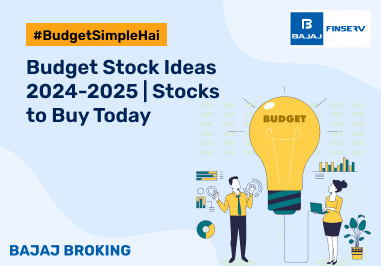
Budget Stock Ideas 2024-2025 | Stocks to Buy Today
July 24, 2024 | 4 Min. read

IPO Eligibility Criteria : Full Details
March 15, 2024 | 6 Min. read

What Is the Lock-In Period in IPOs?
October 18, 2023 | 6 Min. read

Godfrey Phillips Announces 2:1 Bonus Shares
September 16, 2024 | 7 Min. read

Jindal Group- A Comprehensive Analysis
September 27, 2024 | 7 Min. read
Read More Blogs
Our Secure Trading Platforms
Level up your stock market experience: Download the Bajaj Broking App for effortless investing and trading



